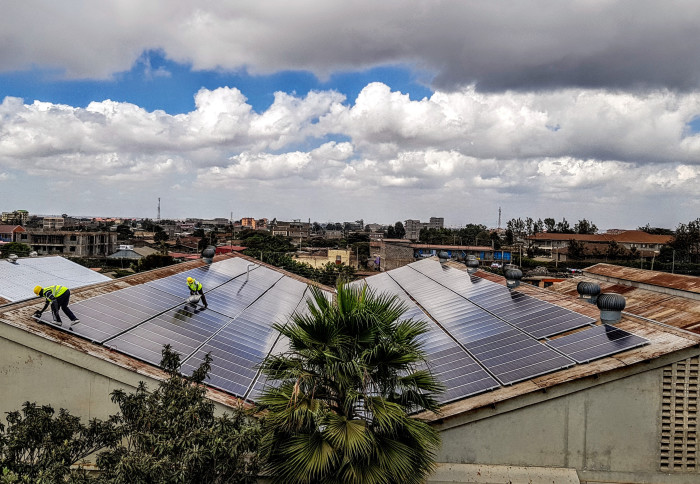

A consortium including Imperial College London researchers has created a bespoke energy and emissions model to help Kenya achieve its climate goals.
The Kenya Carbon Emission Reduction Tool (KCERT 2050) allows users to trial options for reducing climate change-inducing carbon emissions at a faster rate and to build a pathway that meets long-term emission targets to 2050 and beyond.
KCERT will support and stimulate the decarbonisation debate in Kenya. Dr Onesmus Mwabonje
It can be used to support policymaking to allow governments to increase national action on climate change and strengthen ambition in line with the 2015 Paris Agreement.
The interactive energy model – the first in East Africa – was delivered under the UK Government’s international 2050 Calculator programme, funded by the Department for Business, Energy and Industrial Strategy. It was led by global engineering, management and development consultancy Mott MacDonald and a consortium which includes Imperial College London, Climact, and Ricardo.
KCERT 2050 is designed to help policymakers, energy producers and consumers (including the public) in Kenya to understand the energy- and emissions-related choices they are making, providing a platform for engaging in dialogues on the challenges and opportunities of the future energy system and the responses to climate change. The project gives Kenya the opportunity to pioneer climate mitigation approaches across the East African region.
Stimulating the decarbonisation debate
Dr Onesmus Mwabonje, a Research Fellow at Imperial College London’s Centre for Environmental Policy and core member of the Consortium team for Kenya, said: “KCERT will support and stimulate the decarbonisation debate in Kenya, helping to break down silos and generate the consensus across government departments needed to effectively combat, mitigate and adapt to climate change.
“The decision support capacity that the International 2050 Calculator programme has developed on the modelling of complex transitions and technological options will have a lasting impact in the country and beyond.”
Dr John Olukuru, Head of Data Science and Analytics at Strathmore University and Lead KCERT Modeller added: “The Kenya Carbon Emission Reduction Tool (KCERT) 2050 is an important data-driven policymaking tool in climate change. It will help every Kenyan, expert or non-expert, to engage in a well-informed climate change debate.
“The calculator considers all sectors, stakeholders’ input and various scenarios that provide enormous volume of data and hence sets a foundation to applying AI and machine learning to monitor and decrease carbon emissions, streamline operations to empower every policy maker to recognize that climate action provides an opportunity to create value by tapping into new markets and meeting growing demand for low-carbon plus greener services.”
Advancing Kenya’s net zero transition
KCERT 2050 is an integrated model of energy demand and supply, emissions, and land use in Kenya. It aims to identify energy secure pathways for energy demand and supply between 2015 and 2050.
It was developed on the framework of the UK 2050 Calculator and adapted for the Kenyan situation. It sets out a range of four trajectories for the types of changes that might occur, ranging from business as usual to high ambition. These trajectories are intended to reflect the whole range of potential future scenarios that might be seen in that particular sector.
David Orr, Emerging Markets Trade and Investment Lead for Mott MacDonald and Programme Country Manager for Kenya, noted: “It has been such a pleasure working with the team to build the KCERT 2050 tool. Over the coming years, the tool will play a core role in advancing Kenya’s net zero transition, inspiring policy-makers across East Africa.”




















Discussion about this post